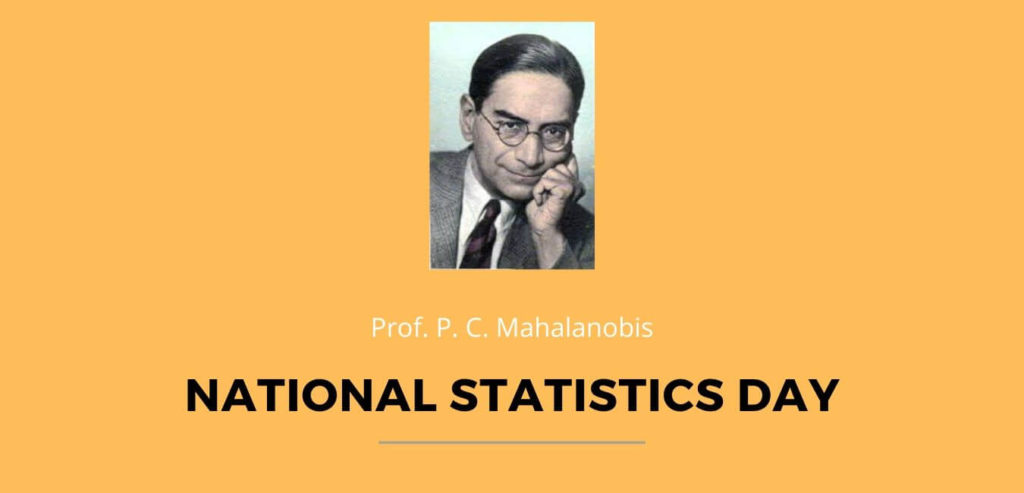Every year on 29th June, the government celebrates National Statistics Day to popularize the use of Statistics in everyday life and sensitize public on how Statistics helps shaping and framing policies for the welfare of people. Due to the global Covid-19 pandemic, the National Statistics Day 2020 was celebrated through video conferencing.
Statistics Day is celebrated every year on the birth anniversary of Prof. P C Mahalanobis, on 29th June, in recognition of his invaluable contribution in establishing the National Statistical System
Why Statistics Day is celebrated on 29 June
National Statistics Day 2020 Theme
The theme of National Statistics Day, 2020 was:
- Sustainable Development Goal– 3 (Ensure healthy lives and promote well-being for all at all ages) &
- Sustainable Development Goal– 5 (Achieve gender equality and empower all women and girls).
On the occasion, Ministry of Statistics and Programme Implementation (MoSPI) has instituted a new award ‘Prof. P. C. Mahalanobis National Award in Official Statistics’ for recognizing outstanding achievement of official statisticians in Central Government, State/UT Governments and institutions.
Prof. P. C. Mahalanobis National Award in Official Statistics’2020 was conferred upon Dr. Chakravarthi Rangarajan, Former Governor, Reserve Bank of India in recognition of his outstanding contributions to the National Statistical System in India.
Additionally, Dr Arvind Pandey, former Director National Institute of Medical Statistics (NIMS), Indian Council of Medical Research (ICMR) and Dr. Akhilesh Chandra Kulshreshtha, Ex-Addl. Director General, MoSPI, Government of India were jointly given the Prof. P.V. Sukhatme National Award in Statistics 2020 for their life time contribution in the field of Statistics.
About Prof. P. C. Mahalanobis
Prasanta Chandra Mahalanobis was an Indian scientist and statistician. For his contributions, Mahalanobis has been considered the father of modern statistics in India.
Mahalanobis treated statistics as a “new technology for increasing the efficiency of human effort in the wildest sense”. He analysed 60 years of data regarding the floods in Odisha and published his findings in 1926, which three decades later laid the foundation for the construction of the Hirakud dam on the Mahanadi river.
In 1931, Mahalanobis established the famous Indian Statistical Institute—a specialised institute to facilitate research and learning of statistics within the premises of Presidency College. Two years later, he set up Sankhya, the Indian Journal of Statistics.
He Came up with the famous “Mahalanobis Distance”, a measurement often used in studies of population distribution. Want to understand the concept further.
As a member of the Planning Commission, Mahalanobis extensively contributed to a young India’s Five-Year Plans beginning from the Second. The second five-year plan, under his direction, came up with the Mahalanobis Model, which directed the course of India’s economy until the advent of liberalisation in the early 1990s.

